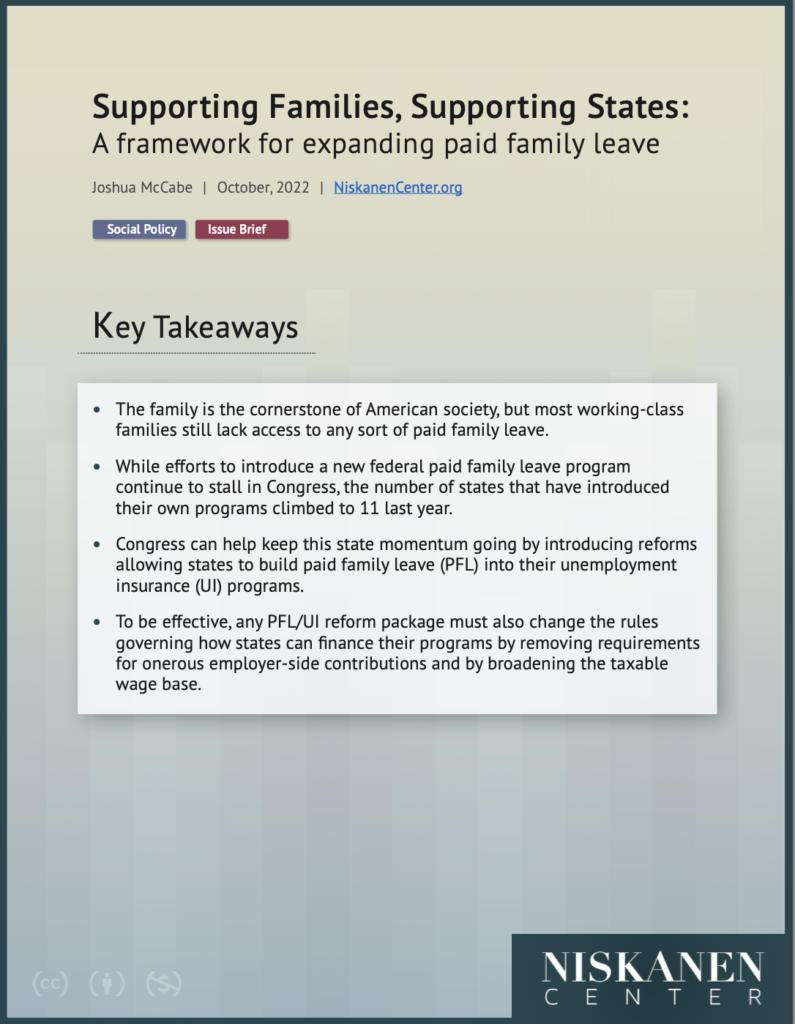Key Takeaways:
- The family is the cornerstone of American society, but most working-class families still lack access to any sort of paid family leave.
- While efforts to introduce a new federal paid family leave program continue to stall in Congress, the number of states that have introduced their own programs climbed to 11 last year.
- Congress can help keep this state momentum going by introducing reforms allowing states to build paid family leave (PFL) into their unemployment insurance (UI) programs.
- To be effective, any PFL/UI reform package must also change the rules governing how states can finance their programs by removing requirements for onerous employer-side contributions and by broadening the taxable wage base.
Introduction
Families are the cornerstone of American life. The care that parents provide to children, that spouses provide to each other, and that adult children provide to their elderly parents is essential to a thriving civil society and a strong economy. Despite widespread recognition of this reality, our public policies have been slow to catch up to it.
The persistent gaps in access to paid family leave are a case in point. A vast and bipartisan majority of the public supports access to paid family leave. Nevertheless, this consensus quickly falls apart at the level of policy specifics. Should a national paid leave program be comprehensive or focused on parental leave, where bipartisan support is greatest? Should policymakers push employers to provide paid leave with tax incentives and mandates or set up a federal program funded by payroll taxes?
Congress has toyed with both the tax credit approach and payroll tax approaches in recent years. In 2017, Republicans enacted an Employer Credit for Paid Family and Medical Leave, but program participation has been lackluster. In 2021, Democrats tried and failed to pass the FAMILY Act as part of a larger reconciliation bill. Despite conceptual popularity in public polling, these top-down approaches have failed to significantly expand access to paid family leave at the federal level.
State governments are another story. To date, 11 states and Washington D.C. have enacted paid family leave programs in some form. The growing number of ballot initiatives and proposals before state legislatures suggest other states are facing pressure to follow suit. This paper makes the case for building on these state successes by laying out a national framework for supporting paid family leave from the bottom up. While policymakers have entertained the idea of allowing states to, for instance, provide paid family leave through their unemployment insurance programs, such efforts have typically failed to embrace the structural reforms necessary to make bottom-up approaches fiscally and administratively viable. Rather than give up, national policymakers can glean important lessons for the path forward by studying why federal and state-led efforts to expand paid family leave have succeeded or failed.
Photo Credit: iStock
